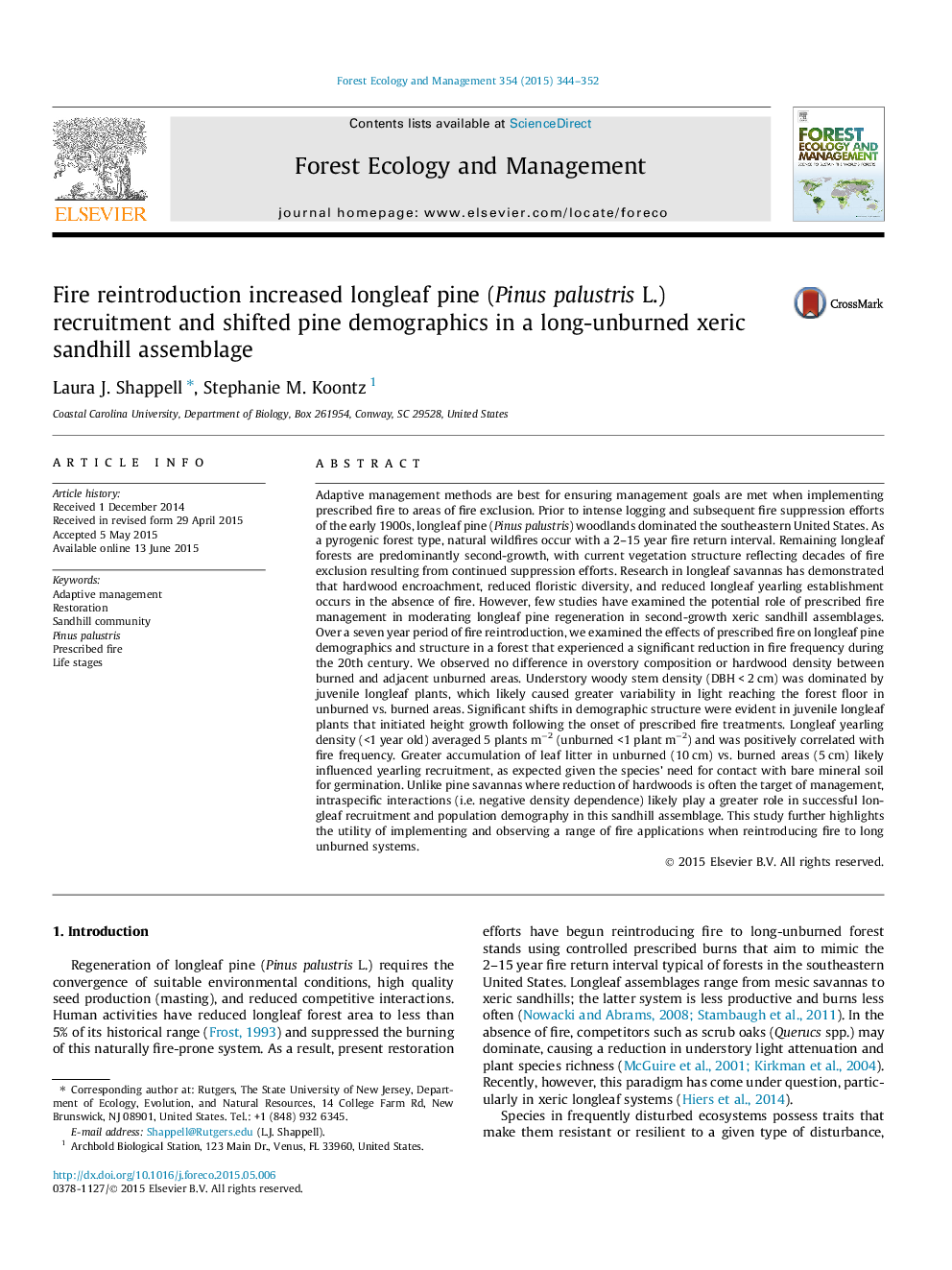| Article ID | Journal | Published Year | Pages | File Type |
|---|---|---|---|---|
| 86165 | Forest Ecology and Management | 2015 | 9 Pages |
•Of the 5 longleaf life stages outlined, fire affected saplings and trees the least.•Vertical growth of longleaf seedlings was correlated with fire management.•Understory density was predominantly longleaf seedlings, shrubs were sparse.•Burned plants were released earlier from the grass stage compared to unburned.•High longleaf recruitment reflected confluence of fire and masting.
Adaptive management methods are best for ensuring management goals are met when implementing prescribed fire to areas of fire exclusion. Prior to intense logging and subsequent fire suppression efforts of the early 1900s, longleaf pine (Pinus palustris) woodlands dominated the southeastern United States. As a pyrogenic forest type, natural wildfires occur with a 2–15 year fire return interval. Remaining longleaf forests are predominantly second-growth, with current vegetation structure reflecting decades of fire exclusion resulting from continued suppression efforts. Research in longleaf savannas has demonstrated that hardwood encroachment, reduced floristic diversity, and reduced longleaf yearling establishment occurs in the absence of fire. However, few studies have examined the potential role of prescribed fire management in moderating longleaf pine regeneration in second-growth xeric sandhill assemblages. Over a seven year period of fire reintroduction, we examined the effects of prescribed fire on longleaf pine demographics and structure in a forest that experienced a significant reduction in fire frequency during the 20th century. We observed no difference in overstory composition or hardwood density between burned and adjacent unburned areas. Understory woody stem density (DBH < 2 cm) was dominated by juvenile longleaf plants, which likely caused greater variability in light reaching the forest floor in unburned vs. burned areas. Significant shifts in demographic structure were evident in juvenile longleaf plants that initiated height growth following the onset of prescribed fire treatments. Longleaf yearling density (<1 year old) averaged 5 plants m−2 (unburned <1 plant m−2) and was positively correlated with fire frequency. Greater accumulation of leaf litter in unburned (10 cm) vs. burned areas (5 cm) likely influenced yearling recruitment, as expected given the species’ need for contact with bare mineral soil for germination. Unlike pine savannas where reduction of hardwoods is often the target of management, intraspecific interactions (i.e. negative density dependence) likely play a greater role in successful longleaf recruitment and population demography in this sandhill assemblage. This study further highlights the utility of implementing and observing a range of fire applications when reintroducing fire to long unburned systems.
